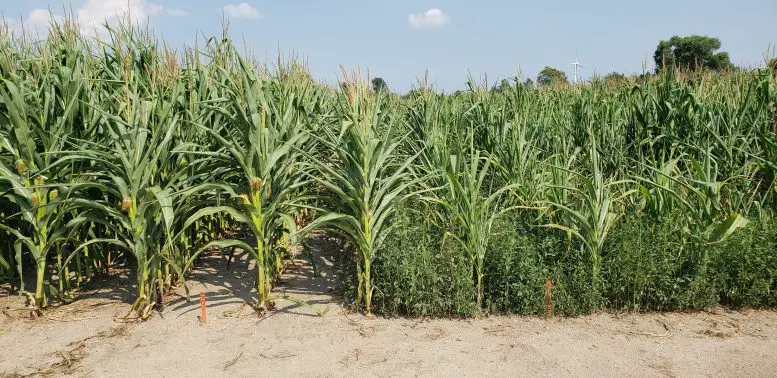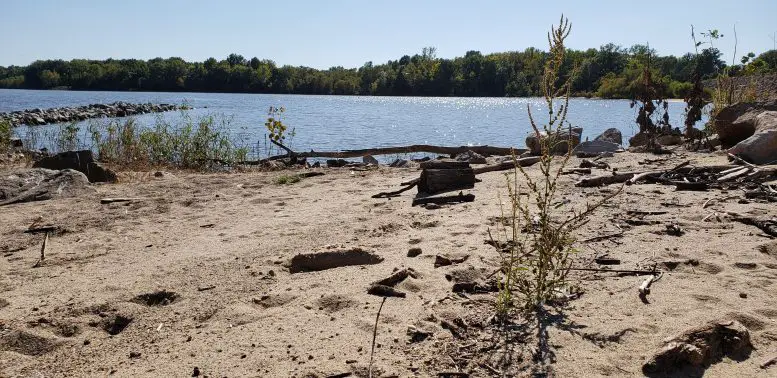In a groundbreaking study, researchers from the University of British Columbia have revealed the profound impact of modern agriculture on the evolution of a once-harmless native plant, the common waterhemp.
The research, published in Science, unveils how the expansion of agricultural practices has turned this plant into a detrimental weed, highlighting the rapid evolutionary changes occurring not only on farms but also in adjacent wild areas.
By comparing genetic samples of waterhemp collected from contemporary farms and nearby wetlands with historical specimens dating back to 1820, the scientists traced the plant’s genetic makeup over the past two centuries.
Their findings shed light on the mechanisms of evolution in different environments, drawing parallels to how the study of ancient human and neanderthal remains provides insights into our own history.
Dr. Julia Kreiner, the first author of the study, explains, “Genetic variants that confer advantages in modern agricultural settings have quickly become prevalent since the intensification of agriculture in the 1960s.
The researchers identified numerous genes within the weed’s genome that contribute to its success on farms, including mutations associated with drought tolerance, rapid growth, and herbicide resistance.
Dr. Kreiner emphasizes, “The profound changes we observe in agricultural environments have unexpected consequences in neighboring habitats, which we typically consider natural.”
These findings have significant implications for conservation efforts aimed at preserving natural areas in landscapes dominated by agriculture.
Strategies such as reducing gene flow from agricultural sites and focusing on protecting isolated natural populations could help mitigate the evolutionary impact of farming.
The common waterhemp, originally native to North America, has transformed into a formidable adversary in recent years due to its genetic adaptations, particularly herbicide resistance.
Dr. Sarah Otto, a co-author of the study, highlights that waterhemp has adapted to survive on drier land and outcompete crops, even though it typically thrived near water bodies.

She explains, “Waterhemp has essentially evolved into a more resilient weed, given the strong selection pressures imposed by human agricultural activities.”
Notably, the researchers discovered that five out of seven herbicide-resistant mutations found in current waterhemp samples were absent in historical specimens.
Dr. Kreiner notes, “Modern farming acts as a powerful filter that determines which plant species and mutations can persist over time. Herbicides stand out as one of the strongest agricultural filters, determining the survival or demise of plants.”
The presence of herbicide-resistant mutations has allowed waterhemp to produce approximately 1.2 times more surviving offspring per year since 1960 compared to non-mutated plants.
The study also revealed the presence of herbicide-resistant mutations in natural habitats, albeit at a lower frequency, raising concerns about the costs of these adaptations for plant life outside agricultural settings.
Dr. Kreiner explains, “In the absence of herbicide applications, being resistant can actually impose costs on a plant, so the changes occurring on farms impact the fitness of the plant in the wild.”
More To Discover
- Concerns Rise Over Possible Link Between Whale Deaths and Offshore Wind Farms; Facebook Faces Backlash Over Censorship
- Blackout Cooking: 5 Ways to Prepare Food Without Electricity
- Understanding Virtual Power Plants and How VPPs Are Redefining Electricity Management
- Fiji Water: A Nightmarish, But Amusing (Thanks To Cleveland) Greenwashing Story

Furthermore, agricultural practices have reshaped the distribution of specific genetic variants across the landscape.
Over the past six decades, a weedy southwestern variety of waterhemp has steadily advanced eastward across North America, spreading its genes into local populations due to its competitive advantage in agricultural environments.
Dr. Stephen Wright, a co-author and Professor in Ecology and Evolutionary Biology at the University of Toronto, underscores the significance of studying historical genomes to understand plant adaptation within short timeframes.
He suggests that expanding this research across different scales and species will enhance our understanding of how farming and climate change are driving rapid plant evolution.
Moving forward, Professor John Stinchcombe from the University of Toronto, another co-author, emphasizes the importance of comprehending the fate of these genetic variants and their impact on non-agricultural, “wild” plant populations—an essential step for future investigations.
The study sheds light on the intricate relationship between modern agriculture and the evolutionary trajectory of plant species, highlighting the need for sustainable agricultural practices that consider the long-term consequences on both farmland and adjacent ecosystems.






















